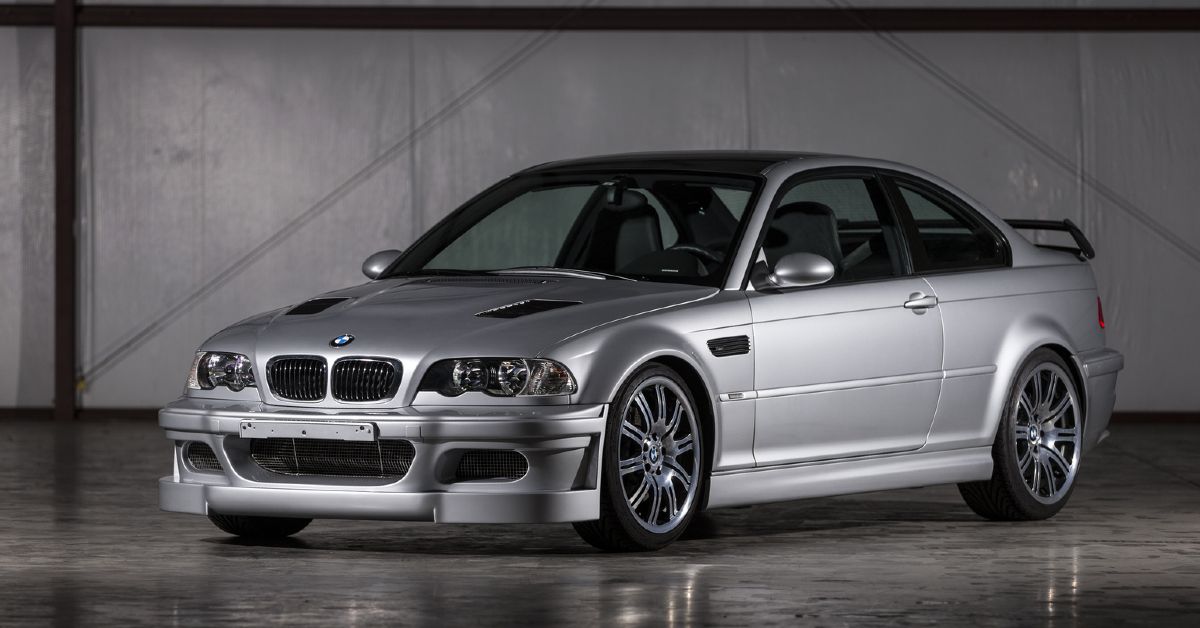When rules at Le Mans threatened the victories BMW had won with their GTR in 2001, they realized how they could get by. Using a loophole in the rules, BMW made a road-going version of their racing GTR, making only 10 models in order to satisfy the requirements so they could still compete in Le Mans. The rarity of the road-going GTR has made these models incredibly valuable. However, when Le Mans changed the rules again a year later to make requirements for racing more strict and detailed, BMW chose to withdraw from Le Mans, instead of using their racing GTR for other European races.
Read on to find out more about the history, rarity, and quirks of BMW's 2001 M3 GTR.
But Why Was It So Limited?
The production run of the 2001 M3 GTR was a mere 10 models. This is not a common practice, but special circumstances warranted this situation. BMW first had the E46 M3 GTR in order to compete in Le Mans in 2001. It won seven out of 10 races in its debut season, and rival manufacturers like Porsche became irritated enough that they noted BMW should have a road-going version of this victory car or else it would be a rule violation. Before that, BMW had the E36 M3 GTR, as well as the E30 M3 and E92 M3.
When BMW was conceiving the idea of the GTR in order to race Le Mans, they decided the homologation of their racing car was a necessary step. Further, the rules of Le Mans were particular enough that at least one road-going version of the GTR needed to be sold. They also realized that their racing car used a V8 engine, and that's when they decided, for consistency purposes, to give the road car a V8 as well. The engine was a 4.0-L that could put out 350 HP.
With this change, BMW knew they could play by Le Mans' rules, as Le Mans allowed small production-run specials with a 10-example minimum to be sold within a year of a racing car's first appearance on the track. These were tricky rules, but Le Mans had standards, and BMW knew just how to barely exploit the loopholes with their new road-going GTR in order to keep winning races with their racing GTR.
Specially Designed To Race
The inner workings of the GTR's interior have been noted for how unusual they are. First off, all comfort equipment was removed and all body parts for both road and racing versions were constructed out of carbon fiber. The rear spoiler, for example, was made from carbon fiber with reinforced plastic. Only two seats were included, not four, and all this made the weight a mere 2,976 lbs.
BMW had to be cautious during construction to factor in regulations regarding emission and noise levels, though with that in mind, they kept the racing version and road version as close to identical as possible. The suspension was also very lowered and the car sported 19-inch sports wheels, all of which was working toward the goal of making the GTR compact without sacrificing its high performance. BMW also gave the M3 GTR its own engine code, P60B40, in order to ensure its competitiveness in Le Mans. Therefore, the engine could not be fitted to any other BMW model.
Cue The Ban!
After all the models were made, racing rules were changed, forbidding the GTR to be used. A year after the 2001 road-going GTR arrived, Le Mans altered the rules to the point that BMW chose to withdraw from further racing competitions at Le Mans. The new rules stated 100 cars, not 10, would need to be built for a car to legally compete and qualify. Other guidelines for following these rules would also be enforced, such as 20% larger air restrictors and 100 lbs heavier weight.
This was too much for BMW to keep playing in Le Mans, but they continued to use their racing GTR in other races in Europe, as the German Nürburgring-Nordschleife and Spa-Francorchamps. Rules were changed at Le Mans regarding homologation, as they felt these rules had been taken advantage of far too many times in the last two decades.
Minor Modifications Made Mandatory
Between the road version and the racing version of the GTR, a few changes had to be implemented for practical purposes. The GTR not only used the aforementioned carbon fiber in order to implement weight reduction but also the front spoiler and rear wing was prominently included for aerodynamic purposes. Between the strut towers and firewall lay extra bracing. And, as mentioned earlier, no rear seats or comfort features were incorporated into the streamlined design.
Sources: drivetribe.com, carscoops.com, endurancewarranty.com, doubleapex.co.za,


--Road-And-Track.jpg)
--Supercars.jpg)
--Pinterest.jpg)
--BMW-Group.jpg)